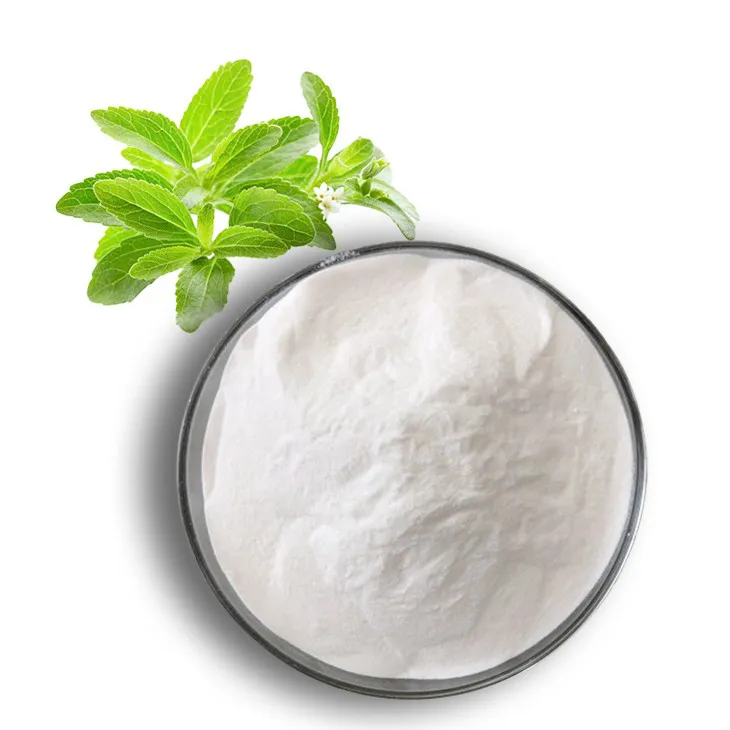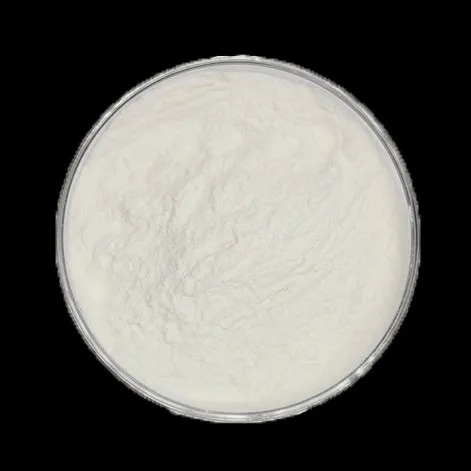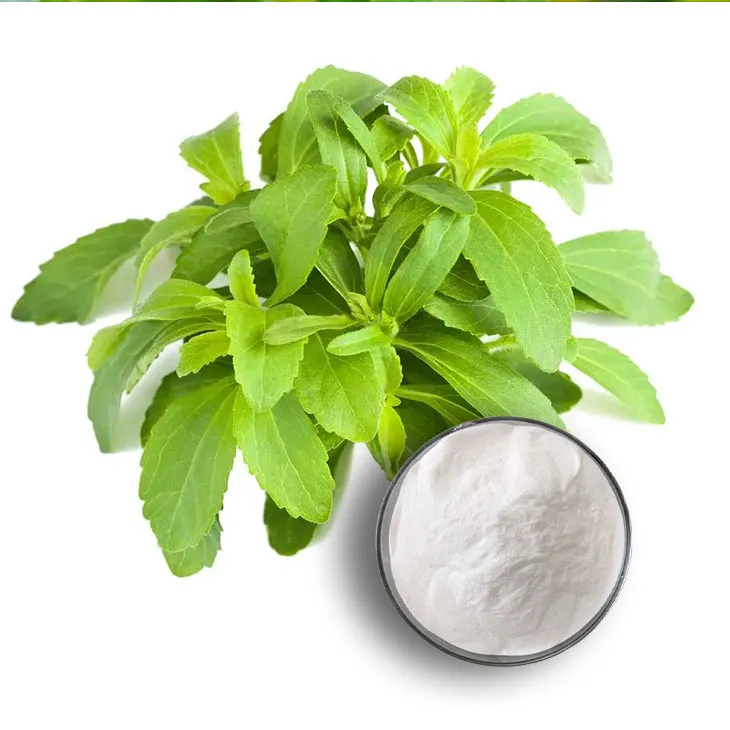- 0086-571-85302990
- sales@greenskybio.com
The Magic of Stevia Extract Powder: A Comprehensive Guide
2024-11-12

1. Introduction to Stevia
Stevia is a remarkable plant that has been making waves in various industries in recent years. Native to South America, it has a long history of use by indigenous people for its sweetening properties. Stevia Extract powder is derived from the leaves of the Stevia rebaudiana plant. This natural sweetener has gained significant popularity as an alternative to traditional sugar, especially for those looking to reduce their calorie intake or manage their blood sugar levels.

2. Cultivation of Stevia
2.1 Ideal Growing Conditions
Stevia plants thrive in warm and sunny climates. They require well - drained soil with a pH range of 6.7 - 7.2. Adequate moisture is crucial during the growing season, but over - watering can lead to root rot. The plants are usually grown from seeds or cuttings.2.2 Propagation
When starting from seeds, it is important to ensure that the soil is kept moist until germination occurs. Cuttings, on the other hand, can be rooted in a suitable rooting medium. Once the plants are established, they need to be spaced appropriately to allow for proper growth. Stevia plants can be grown in both commercial fields and home gardens.
3. The Extraction Process
3.1 Harvesting the Leaves
The first step in obtaining Stevia Extract powder is to harvest the leaves of the Stevia rebaudiana plant. This is typically done when the plants have reached maturity, usually around 3 - 4 months after planting. The leaves are carefully picked to ensure that only the healthy ones are used.3.2 Initial Processing
After harvesting, the leaves are washed thoroughly to remove any dirt or debris. Then, they are dried. Drying can be done either naturally in the sun or using specialized drying equipment. Once dried, the leaves are ready for the extraction process.3.3 Extraction
There are several methods for extracting the sweet compounds from the stevia leaves. One common method is solvent extraction, where solvents such as ethanol or water are used to dissolve the sweet components. Another method is mechanical extraction, which involves crushing the leaves to release the sweet substances. After extraction, the resulting liquid is purified to remove any impurities.3.4 Conversion to Powder
The purified liquid extract is then converted into powder form. This is usually done through a process of evaporation or spray - drying. The resulting Stevia Extract powder is a fine, white powder that can be used as a sweetener.
4. The Science of Stevia's Sweetness
4.1 Sweet Compounds in Stevia
Stevia contains several sweet - tasting compounds, with stevioside and rebaudioside A being the most prominent. These compounds are much sweeter than sugar. For example, stevioside can be up to 200 - 300 times sweeter than sucrose.4.2 Interaction with Taste Buds
When stevia extract powder is consumed, the sweet compounds interact with the taste buds on the tongue. These compounds bind to specific receptors on the taste buds that are responsible for detecting sweetness. However, the taste of stevia is sometimes described as having a slightly different "sweet profile" compared to sugar. Some people may detect a faint aftertaste, which can vary depending on the quality of the stevia extract and individual taste perception.
5. Economic Implications in the Global Market
5.1 Growth in Demand
The demand for stevia extract powder has been steadily increasing in the global market. As consumers become more health - conscious and are looking for alternatives to artificial sweeteners and high - calorie sugars, stevia has emerged as a popular choice. This has led to a significant growth in the stevia market in recent years.5.2 Production and Trade
Major stevia - producing countries include Paraguay, Brazil, and China. These countries play a crucial role in meeting the global demand for stevia. The trade of stevia extract powder involves complex supply chains, from cultivation and extraction in the producing countries to distribution and marketing in consumer markets around the world.5.3 Impact on the Sugar Industry
The rise of stevia has had an impact on the traditional sugar industry. As more consumers switch to stevia, the demand for sugar may decline in some segments. However, the sugar industry has also been exploring ways to compete, such as through marketing the natural and traditional aspects of sugar.6. Potential for Future Development in Different Industries
6.1 Food and Beverage Industry
In the food and beverage industry, stevia extract powder has a wide range of applications. It can be used in soft drinks, baked goods, confectionery, and dairy products as a sugar substitute. Manufacturers are constantly exploring new ways to incorporate stevia into their products to meet the growing demand for low - calorie and healthy options.6.2 Cosmetics and Personal Care
Stevia also shows potential in the cosmetics and personal care industry. Its sweet - smelling compounds can be used in products such as lip balms, lotions, and shampoos. Additionally, stevia has antioxidant properties that may be beneficial for skin and hair health.6.3 Pharmaceutical Industry
In the pharmaceutical industry, research is being conducted on the potential health benefits of stevia. Some studies suggest that stevia may have anti - diabetic, anti - hypertensive, and anti - inflammatory properties. If these properties are further validated, stevia could be used in the development of new drugs or dietary supplements.7. Conclusion
Stevia extract powder is truly a magical substance with a wide range of properties and potential applications. From its natural origin and unique extraction process to its sweetening power and potential health benefits, it has much to offer. As research continues and technology advances, we can expect to see even more developments in the use of stevia in various industries. Whether it is in the pursuit of a healthier lifestyle or in the search for new and innovative products, stevia is likely to play an increasingly important role in the future.
FAQ:
What is Stevia Extract Powder?
Stevia extract powder is a product derived from the stevia plant. It is obtained through an extraction process. The stevia plant is a natural source of sweet compounds. The extraction concentrates these sweet components into a powder form, which can be used as a sweetener in various applications.
How is Stevia Cultivated?
Stevia is typically cultivated in warm and sunny regions. It requires well - drained soil. The plants are usually grown from seeds or cuttings. Adequate watering, proper spacing between plants, and protection from pests and diseases are important aspects of stevia cultivation. It is a relatively delicate plant, and careful agricultural practices are needed to ensure a good yield.
What is the Science behind Stevia's Sweetness?
Stevia contains compounds called steviol glycosides, which are responsible for its sweetness. These molecules interact with the taste receptors on the human tongue. When consumed, they bind to the sweet taste receptors, sending signals to the brain that are interpreted as sweetness. The structure of steviol glycosides is different from that of traditional sugars like sucrose, which is why it can provide sweetness without the same caloric content.
How does Stevia Extract Powder Interact with Taste Buds?
As mentioned before, the steviol glycosides in stevia extract powder interact with the sweet taste receptors on the taste buds. These receptors are specialized cells that can detect different flavors. When the steviol glycosides bind to the sweet receptors, they trigger a neural response that the brain interprets as a sweet taste. The intensity of the sweetness perception can vary depending on the concentration of the stevia extract powder used.
What are the Economic Implications of Stevia in the Global Market?
Stevia has significant economic implications in the global market. As a natural sweetener, it has gained popularity as a healthier alternative to artificial sweeteners and traditional sugars. This has led to increased demand in the food and beverage industry. Many companies are investing in stevia production and research. In addition, stevia cultivation can also have economic benefits for farmers in regions where it is grown, providing a new source of income. However, there are also challenges such as competition from other sweeteners and regulatory requirements in different countries.
Related literature
- The Stevia Plant: Cultivation and Utilization"
- "The Science of Stevia Sweetness: A Review"
- "Stevia in the Global Market: Economic Opportunities and Challenges"
- ▶ Hesperidin
- ▶ citrus bioflavonoids
- ▶ plant extract
- ▶ lycopene
- ▶ Diosmin
- ▶ Grape seed extract
- ▶ Sea buckthorn Juice Powder
- ▶ Beetroot powder
- ▶ Hops Extract
- ▶ Artichoke Extract
- ▶ Reishi mushroom extract
- ▶ Astaxanthin
- ▶ Green Tea Extract
- ▶ Curcumin Extract
- ▶ Horse Chestnut Extract
- ▶ Other Problems
- ▶ Boswellia Serrata Extract
- ▶ Resveratrol Extract
- ▶ Marigold Extract
- ▶ Grape Leaf Extract
- ▶ blog3
- ▶ blog4
- ▶ blog5
-
Organic Tongkat Ali extract powder factory.
2024-11-12
-
How to make powder with ashwagandha extract.
2024-11-12
-
Rosehip extract manufacturers from China.
2024-11-12
-
The best cat's claw extract in nature.
2024-11-12
-
Chinese Dandelion Leaf Extract Suppliers.
2024-11-12
-
Phyllanthus Emblica Extract
2024-11-12
-
Uridine-5'-monophosphate Disodium salt
2024-11-12
-
Avocado Extract Powder
2024-11-12
-
Europen Bilberry Extract
2024-11-12
-
Yellow Pine Extract
2024-11-12
-
Beetroot Powder
2024-11-12
-
White Peony Extract
2024-11-12
-
Green coffee bean Extract
2024-11-12
-
Almond Extract Powder
2024-11-12
-
Yam Extract
2024-11-12





















